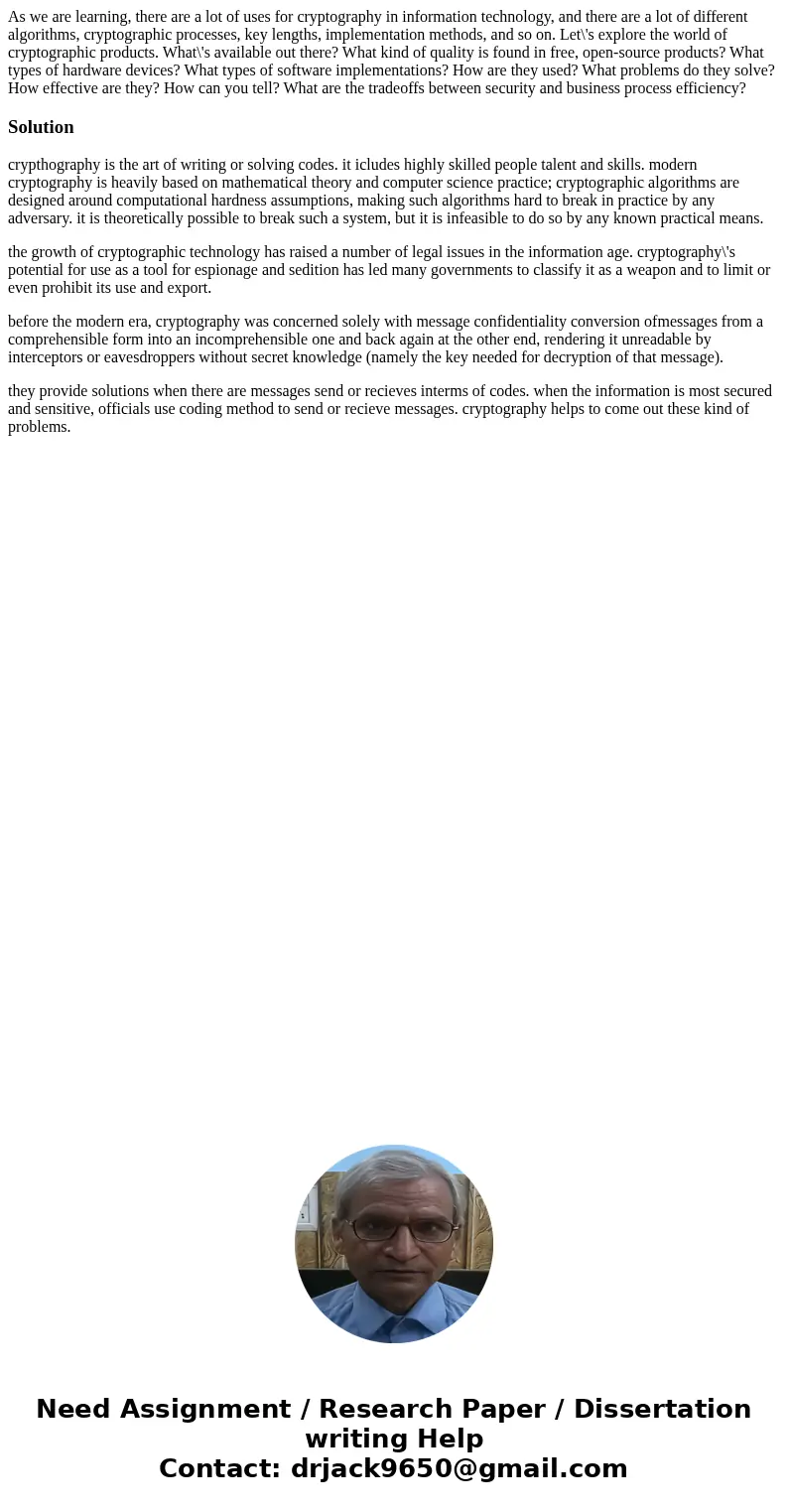As we are learning there are a lot of uses for cryptography
As we are learning, there are a lot of uses for cryptography in information technology, and there are a lot of different algorithms, cryptographic processes, key lengths, implementation methods, and so on. Let\'s explore the world of cryptographic products. What\'s available out there? What kind of quality is found in free, open-source products? What types of hardware devices? What types of software implementations? How are they used? What problems do they solve? How effective are they? How can you tell? What are the tradeoffs between security and business process efficiency?
Solution
crypthography is the art of writing or solving codes. it icludes highly skilled people talent and skills. modern cryptography is heavily based on mathematical theory and computer science practice; cryptographic algorithms are designed around computational hardness assumptions, making such algorithms hard to break in practice by any adversary. it is theoretically possible to break such a system, but it is infeasible to do so by any known practical means.
the growth of cryptographic technology has raised a number of legal issues in the information age. cryptography\'s potential for use as a tool for espionage and sedition has led many governments to classify it as a weapon and to limit or even prohibit its use and export.
before the modern era, cryptography was concerned solely with message confidentiality conversion ofmessages from a comprehensible form into an incomprehensible one and back again at the other end, rendering it unreadable by interceptors or eavesdroppers without secret knowledge (namely the key needed for decryption of that message).
they provide solutions when there are messages send or recieves interms of codes. when the information is most secured and sensitive, officials use coding method to send or recieve messages. cryptography helps to come out these kind of problems.

 Homework Sourse
Homework Sourse